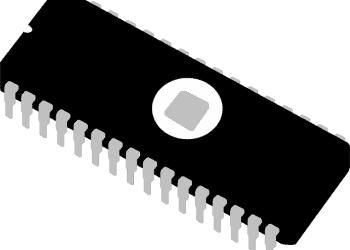The electronics industry heavily relies on semiconductor fabrication, a detailed process crucial for the devices we use daily. So what is the technological importance and broad economic impact of manufacturing semiconductor plants?

These facilities, often referred to as “fabs,” are the beating heart of the semiconductor industry. They house the intricate processes and advanced technologies required to manufacture the tiny, complex chips that power our digital world. From the clean rooms to the cutting-edge lithography machines, these fabs represent a fascinating intersection of science, engineering and innovation.
Crucially, understanding about manufacturing semiconductors plants goes beyond the technical aspects and delves into the economic and geopolitical forces that shape this vital industry. Let’s delve into the compelling spaces where precision and creativity converge massively.
A Brief Look at Semiconductor History and Importance
Semiconductors form the foundation of modern electronic devices, powering everything from smartphones to sophisticated medical technology. These vital components are produced in specialized facilities known as fabrication plants or ‘fabs.’ These sites are equipped with exceptionally clean environments, even purer than hospital operating rooms. The evolution of semiconductor manufacturing from its modest beginnings in the late 1950s to today’s complex microprocessors represents a significant technological advancement.
The impact of semiconductors on our daily lives cannot be overstated. They are the unsung heroes behind the rapid advancement of technology in recent decades. From enabling faster, more powerful computing to revolutionizing telecommunications and transforming industries such as healthcare and automotive, semiconductors have been at the forefront of innovation. As we continue to demand more from our electronic devices, the importance of semiconductor manufacturing only continues to grow.
Who’s Leading the Global Race?
In the field of semiconductor production, Asia leads, with Taiwan, South Korea and China at the forefront. Taiwan’s TSMC, for instance, stands as the world’s largest semiconductor maker, creating chips for giants such as Apple and AMD. South Korea’s contributions come from Samsung and SK Hynix, who focus mainly on memory chips. Meanwhile, in the U.S., Intel remains a leader in both fabrication and chip design. The geographical spread of these fabs is influenced by local government support, resource availability and technical skills.
The global semiconductor industry is highly competitive, with companies constantly vying for market share and technological superiority. While Asia currently dominates the landscape, other regions are making significant investments to boost their domestic semiconductor capabilities. The United States, for example, has recently introduced initiatives to encourage chip manufacturing on its soil, recognizing the strategic importance of this industry. As the demand for semiconductors continues to rise, we can expect to see an intensifying race among nations to secure their position in this crucial sector.
Emerging Trends and Technological Advancements
The semiconductor industry continuously adapts, driven by technological breakthroughs and evolving market demands. Innovations like extreme ultraviolet (EUV) lithography push boundaries on chip size and efficiency. The industry is also turning toward sustainable practices, aiming to reduce water and carbon footprints. New semiconductor companies bring innovative ideas and flexible approaches, fueling ongoing growth and creativity in the sector.
Challenges to the Continued Growth
The semiconductor industry, despite its growth and technological achievements, confronts numerous challenges. Resource scarcities, such as silicon, are persistent issues, compounded by geopolitical strife and trade barriers. Environmental concerns are also significant, as fabs require extensive water and energy. Moreover, intense competition and swift innovation necessitate continual investment in research and development, often impacting profitability.
The Bigger Economic Picture
Semiconductors are critical not only technologically but also economically worldwide. The industry’s performance influences myriad sectors, including automotive, telecommunications and consumer electronics. As fabs work to meet increasing demands, their success crucially shapes innovation and efficiency in tech-dependent industries globally. Looking forward, the semiconductor industry is poised for further growth, propelled by the unrelenting demand for more advanced technology.
In summary, exploring the semiconductor fabrication industry provides insight into a sector that significantly affects both our digital and economic landscapes. Understanding this industry’s dynamics helps us grasp not just the technology’s complexities but its wide-reaching effects as well.





